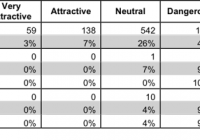Cybersecurity: The One ETF You Need To Know For 2015
The Sony hack and latest credit card breaches show demand for the market. The ETF’s top ten holdings are relative small companies with eight being worth less than $2 billion. The ETF is the only pure play in the sector and should see strong demand as the go to product for the market. In November, a new ETF hit the market that for the first time offered investors a way to get a basket of stocks in one of the hottest sectors. PureFunds launched the ISE Cyber Security ETF (NYSEARCA: HACK ), which remains the first and only true cybersecurity ETF for investors. With all of the talk about the Sony (NYSE: SNE ) hacking and what it means for companies, this fund is likely to come out a winner for many years as trends shift towards securing the world’s data. According to this interview , the inspiration for the fund was twofold. The company wanted to showcase the potential of the cyber security industry and also saw the lack of an investment vehicle in the sector. When asked about the non-direct competing ETFs that are in the technology sector, the company pointed something very interesting out. The larger PowerShares QQQ Trust ETF (NASDAQ: QQQ ) and Technology Select Sector SPDR ETF (NYSEARCA: XLK ) have less than 5% overlap with ISE Cyber Security. Here is a look at the top ten holdings as of December 20th: Imperva (NYSE: IMPV ): 8.4% Vasco Data (NASDAQ: VDSI ): 8.3% Infoblox (NYSE: BLOX ): 5.9% Palo Alto Networks (NYSE: PANW ): 5.8% Qualys (NASDAQ: QLYS ): 5.8% IntraLinks (NYSE: IL ): 5.1% Proofpoint (NASDAQ: PFPT ): 5.1% Radware (NASDAQ: RDWR ): 4.8% Fortinet (NASDAQ: FTNT ): 4.7% Barracuda Networks (NYSE: CUDA ): 4.7% In total, the fund has 26 holdings. Most of the top ten holdings aren’t immediately recognizable. In fact, two of the bigger names in cyber security, Symantec (NASDAQ: SYMC ) and FireEye (NASDAQ: FEYE ), make up 4.5% and 3.4% of the ETF respectively. It is worth noting that the average market capitalization of the top ten holdings is $2.55 billion. This figure comes with two of the funds trading less than $1 billion and eight of the top ten holdings having market capitalizations under $2 billion (Fortinet $5.1 billion, Palo Alto Networks $10.1 billion). I think this represents a huge opportunity as these companies can grow fast in this market and offer sizable returns. Cybersecurity is a huge market and is continuing to grow. The Sony hack that left the paper using pen and paper has shown how vulnerable companies are and also what the cleanup process can look like. The FBI also said that 90% of companies are vulnerable and could have been attacked just like Sony was. Sony recently hired Mandiant Forensics, a unit of FireEye to help with the cleanup. Mandiant is an incident response firm that helps victims of breaches by cleaning up and restoring. Mandiant has helped with some of the biggest security breaches, including the infamous 2013 Target (NYSE: TGT ) hack. FireEye makes up 3.4% of the ETF, but shows exactly what kind of growth the industry is seeing. Staples (NASDAQ: SPLS ) recently estimated that 1.16 million customers may have been impacted by a credit card hack at its stores. This follows up a two-year period that has seen Home Depot (NYSE: HD ), Target, Kmart, Dairy Queen, and JPMorgan (NYSE: JPM ) in the news for security breaches. As the publicity spreads on these issues and also the claims filed by victims, companies are forced to upgrade security and pay the companies in this portfolio. Investing in a cybersecurity ETF means you win as companies protect themselves. More hacks may make the investments worth more, but investors should rest assured that these companies don’t need hacks to survive, but rather companies to use their prevention software and intelligence to combat potential attacks. One situation investors and companies should be watching is the Regin Trojan that Symantec brought to the public’s attention recently. The top tier espionage tool is being used against governments, infrastructure, businesses, researchers, and individuals. Since 2008, Regin has been using a “degree of technical competence rarely seen.” These are scary times for cybersecurity as data continues to seem unsafe and readily accessible by those who want to find it. The ETF has an expense ratio of 0.75%. The fund has $66 million in assets currently, but I expect that to grow as more information and publicity comes out for this one of a kind ETF. Average volume is 153,000 shares a day. As we head into 2015, I have to recommend investors take a good hard look at this ETF. Despite trading at its highest point since its short inception, I believe the fund has much more to offer. This is a red hot sector that is going to see billions of dollars incoming from large and small companies alike. The company has a good basket of stocks and with lower market capitalization stocks up top, may grow faster than investors are expecting.
